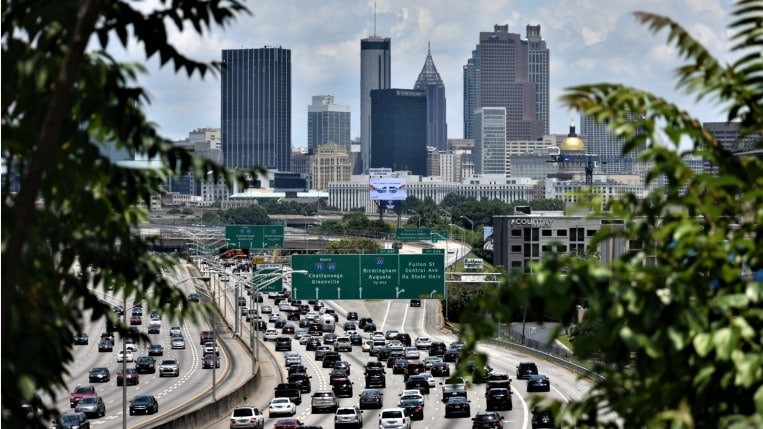 America’s cars got no more fuel-efficient in 2021, according to the Environmental Protection Agency. Greenhouse gas emissions fell to a record low, but they fell from a prior record low and didn’t fall far.
America’s cars got no more fuel-efficient in 2021, according to the Environmental Protection Agency. Greenhouse gas emissions fell to a record low, but they fell from a prior record low and didn’t fall far.
The EPA’s annual Automotive Trends Report takes nearly a year to put together, so we’re just getting numbers on 2021 as 2022 comes to a close.
Some Cars Got More Efficient, But We Didn’t Buy Those
The average new vehicle purchased in 2021 managed 25.4 mpg – the same figure as 2020.
Related: The Most Fuel-Efficient SUVs of 2022 and 2023
The figure stayed flat even though some types of vehicles grew more efficient because America’s buying habits are changing. The EPA found that minivans and vans improved by 3.9 mpg, and car-based SUVs (the EPA defines this as 2-wheel-drive SUVs or all-wheel-drive SUVs below 6,000 pounds gross vehicle weight) improved by 2.6 mpg.
But Americans bought more heavy, truck-based SUVs, canceling out those gains when the averages were calculated.
Truck-based SUVs made up 45% of the market in 2021, the EPA says. More efficient sedans and wagons – 50% of the market as recently as 2013 – fell to just 26%.
Average new vehicle fuel economy, horsepower, weight, and footprint were all at record highs. “Since model year 2004, the combination of technology innovation and market trends have resulted in average new vehicle fuel economy increasing 32%, horsepower increasing 20%, and weight increasing 4%,” the EPA says.
Related: The Most Fuel-Efficient Sedans of 2022 and 2023
7 of 14 Manufacturers Improved on Emissions
Tailpipe emissions have decreased by 25% since 2004 but saw a smaller drop this year. Seven of the 14 largest manufacturers selling cars in the U.S. decreased their carbon emissions. Two – Mercedes and Tesla – saw no change (in Tesla’s case, because you can’t produce less than zero). But five saw their carbon emissions rise. They were led by Mazda, which shifted its lineup and marketing more heavily toward SUVs.
Though 2021 saw flat lines or modest improvements, the EPA estimates that 2022’s numbers will be better.
EPA Estimates Much Better Numbers Next Year
Fuel economy improved just 5% between 2016 and 2021, but the agency projects that it will jump another 5% in just the year 2022. Why?
“The combined category of electric vehicles (EVs), plug-in hybrid vehicles (PHEVs), and fuel cell vehicles (FCVs) increased to 4% of production in model year 2021 and are projected to reach 8% of production in model year 2022, due to expected growth in EV production across the industry,” the EPA estimates.
Electric car adoption won’t grow in a linear fashion. It will snowball, experts believe. Studies show that Americans grow more likely to buy electric cars as they see more of them in their neighborhoods. More than a third of car shoppers now say they’re considering one.
The Washington Post also credits federal policy for the change, noting that “the Trump administration had eased efficiency rules on passenger cars and trucks.” The Biden administration has restored a pre-Trump-era rule that “requires 5% to 10% efficiency increases annually through 2026, up from the 1.5% annual requirements set under the Trump administration.”
